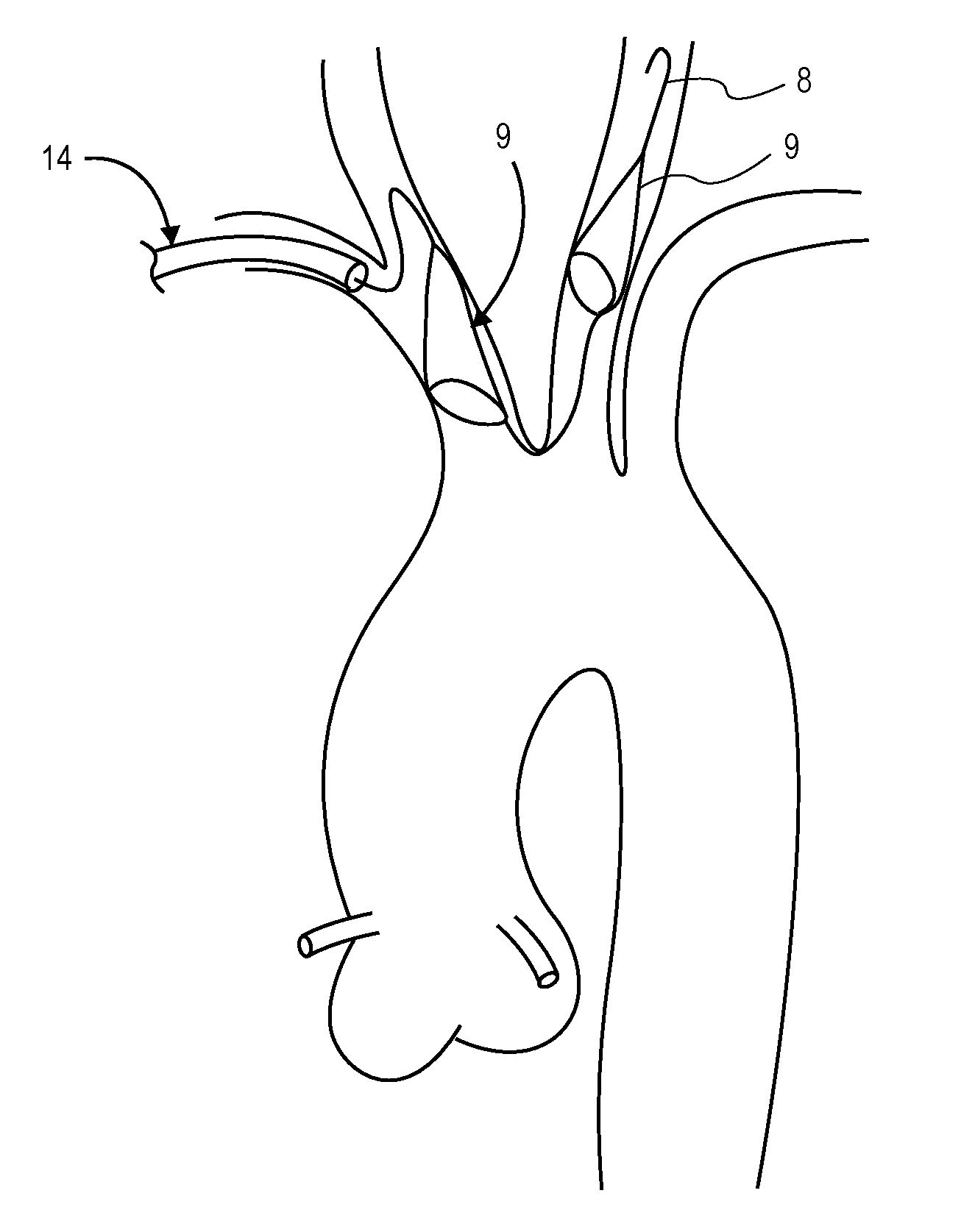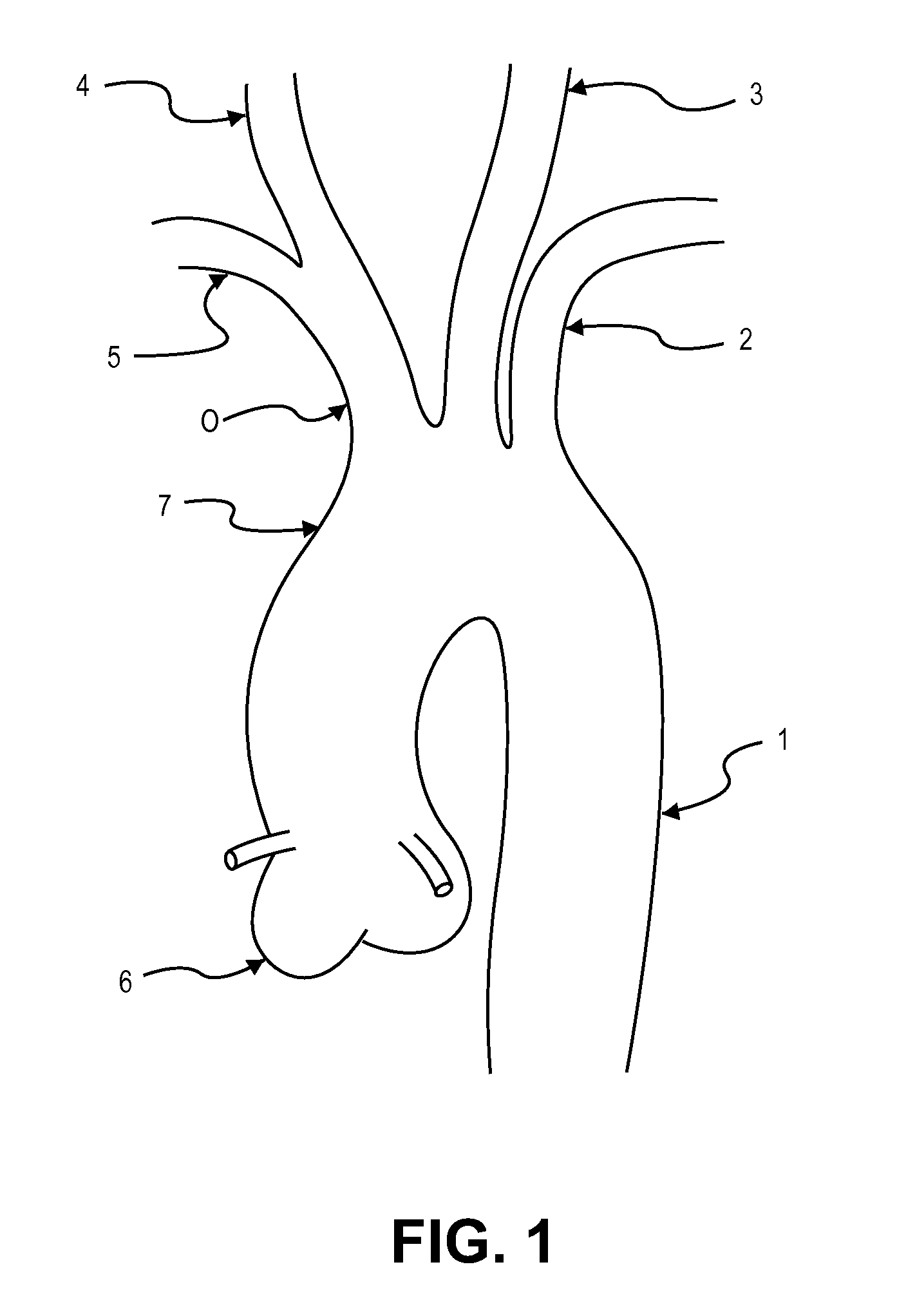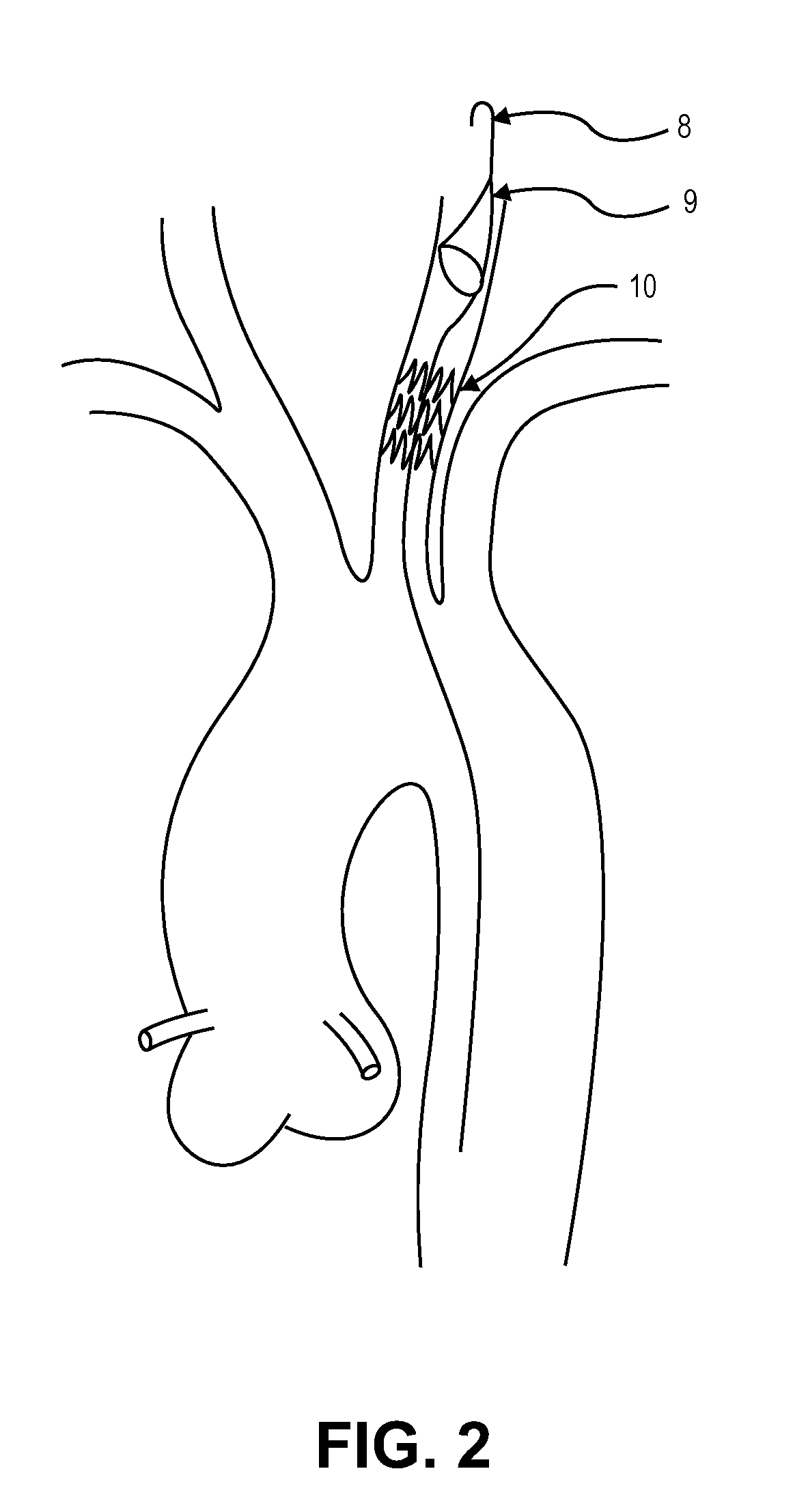Intravascular Blood Filter
a blood filter and intravascular technology, applied in the field of medical devices, can solve the problems of tissue ischemia (lack of oxygen and nutrients), morbidity and mortality, loss of limbs, stroke, etc., and achieve the effect of limiting potential entanglemen
- Summary
- Abstract
- Description
- Claims
- Application Information
AI Technical Summary
Benefits of technology
Problems solved by technology
Method used
Image
Examples
Embodiment Construction
[0041]Before standard intervention would occur by a cardiologist a filter would be placed into the carotid arteries to protect the circulation to the brain where emboli could induce a stroke and leave the patient debilitated. Placement of these filters to the patient's carotid circulation would be most convenient if it occurred without obstruction of the aorta where other catheters would be passed and preferably on the patient's right side as it is common practice for the doctor to steer the catheters from this side of the table. Standard practice is to gain access in the right femoral artery where a sheath would be placed to introduce catheters, guidewires and other device delivery means. This would leave the left femoral artery open but often it too is used for other diagnostic catheters and it is less convenient to work across the patient's body. Other access sites would include carotid entry but the neck area is often again inconvenient to operate from and generally too far from...
PUM
 Login to View More
Login to View More Abstract
Description
Claims
Application Information
 Login to View More
Login to View More - R&D
- Intellectual Property
- Life Sciences
- Materials
- Tech Scout
- Unparalleled Data Quality
- Higher Quality Content
- 60% Fewer Hallucinations
Browse by: Latest US Patents, China's latest patents, Technical Efficacy Thesaurus, Application Domain, Technology Topic, Popular Technical Reports.
© 2025 PatSnap. All rights reserved.Legal|Privacy policy|Modern Slavery Act Transparency Statement|Sitemap|About US| Contact US: help@patsnap.com



